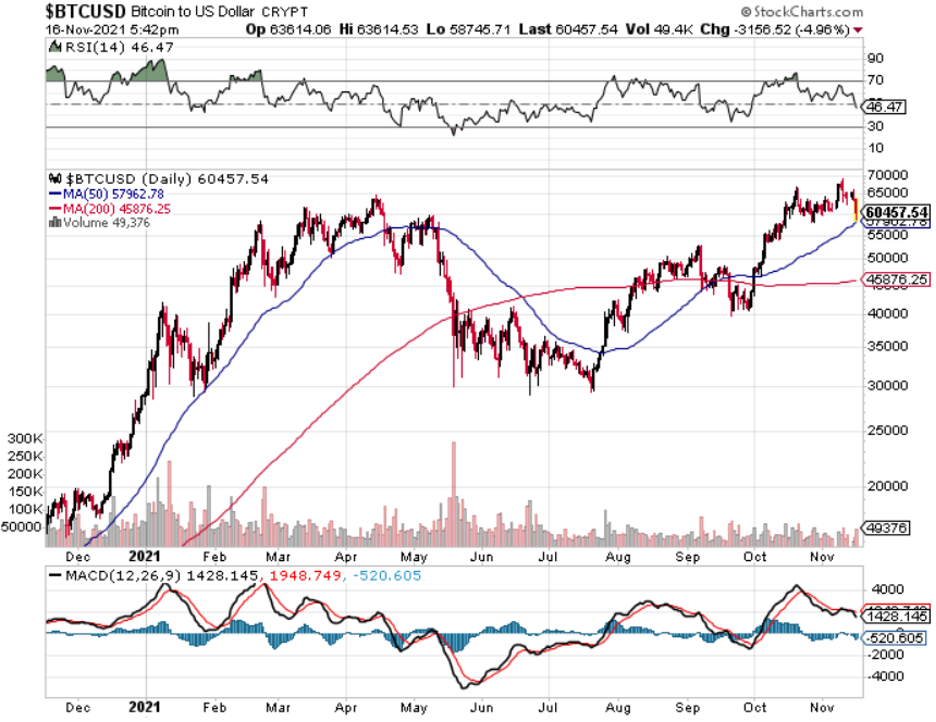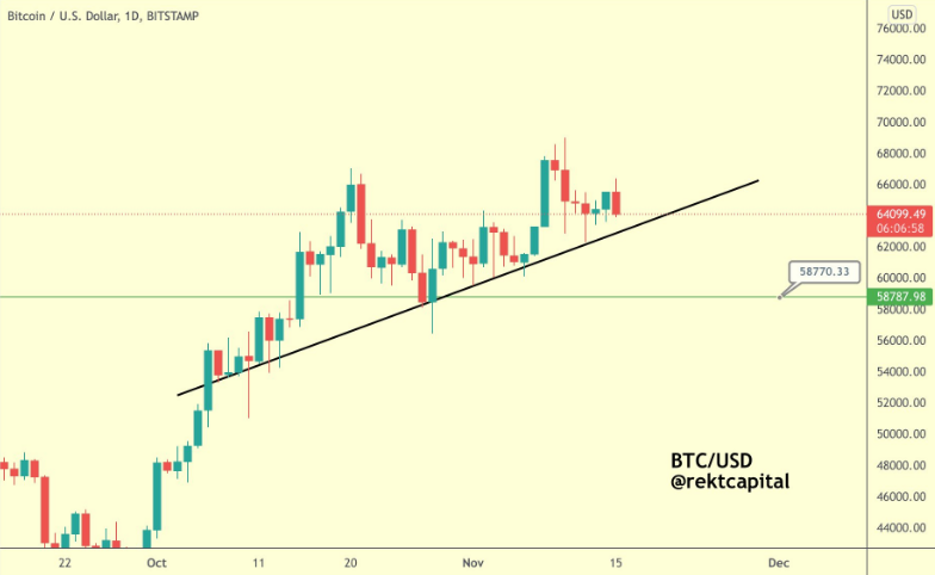Bitcoin (BTC) has rolled out another upgrade called Taproot — the first since 2017.
At a technical level, engineers should be in a celebratory mood because the latest upgrades always make crypto more efficient and with smoother transactions.
At the investor level, this usually serves as a liquidity event in so far as investors buy the digital gold until the upgrade and sell once the upgrade has been announced because we essentially remove the psychology of the anticipation of the new upgrade.
Removing that anticipation makes Bitcoin unattractive in the short-term, but it does no value damage to the long-term narrative.
Taproot’s new tech is coined as Schnorr signatures.
These signatures will mean transacting in Bitcoin has become more secure, efficient, and less expensive.
Most importantly, the upgrade will better enable bitcoin to execute smart contracts on the blockchain.
A critical change from Taproot is the potential for smart contracts.
Smart contracts are digital agreements written in code and stored on the blockchain.
They’re essential in powering decentralized finance, or DeFi, applications and nonfungible tokens, or NFTs.
Compared to Ethereum, Bitcoin has historically been much more limited in accommodating smart contracts.
This will likely lead to more day-to-day applications for bitcoin.
Taprooted Bitcoin will wield better security by enabling multi-signature transactions, or those that involve multiple addresses, to appear as a standard, single transaction.
Multi-signature transactions are often used to enable smart contracts.
As a result, multi-signature transactions will be indistinguishable from simple transactions translating into, meaning greater anonymity.
Schnorr signatures will limit the amount of data required for multi-signature transactions, which are more complicated to process than standard ones.
With less data involved, transactions will become more energy and time-efficient.
Consequently, transactions will be cheaper to process, leading to lower cost of transaction fees.
Taproot will effectively make the digital currency into a better all-around currency and encourage higher adoption rates.
The last major upgrade in 2017, the Lightning Network, helped facilitate much faster and cheaper bitcoin payments than before.
Clearly, the increased Bitcoin volume will take time to materialize, but the positive results from the Lightning Network is one of the main catalysts to higher Bitcoin prices that elevated to north of $60,000.
If developers can keep churning out a major upgrade every 4-5 years, it’s just a matter of time before the currency becomes frictionless, feeless, ubiquitous, and positive for the environment.
At a broader level, Bitcoin is still in the teething stages of its evolution, but it’s safe to say, it’s come a long way since its inception.
Making it more palatable for developers to create apps on will also suck away value and volume from Ether.
On the negative side of the ledger, there are a few potential drawbacks to the upgrade, but they’re minimal in the face of the benefits and only reveal themselves sometimes because Taproot is only partially adopted by network participants (only 54% of Bitcoin nodes enforce Taproot right now, a number which has ticked up in recent days).
The second negative is that it’s not entirely certain how the smart contracts and the functioning for decentralized apps (dApps) will work itself out.
Ethereum is well established on this front, and a few developers have told me that this new upgrade for the dApps and smart contract angle of it, is somewhat misleading.
It will take time to work out the kinks and not all upgrades go without issues.
As we barrel towards the launch of the Metaverse, it’s still a few years out, cryptocurrencies are basically fighting against each other to be the first of the bunch to be adopted as the payment of choice for the Metaverse.
That’s why these upgrades are highly necessary for a de facto digital arms race.
Being able to build apps on top of the crypto leads to what the Metaverse will be about.
Imagine your avatar entering the Metaverse and buying a Metaverse real estate property in Ether or Bitcoin and that transaction goes through instantaneously in real-time and 100% secure.
That is the world we are trending towards, even if we are a long way off now, and many of these developers for Ethereum and Bitcoin are skating towards where they think the puck will be in 5 or 10 years.
I believe we will hold the $58,000 support level after this dip, and we will take a run past the new all-time highs.
It’s only a matter of time before we close in on $100,000 even if traders took profits from the Taproot upgrade.





